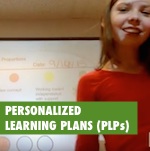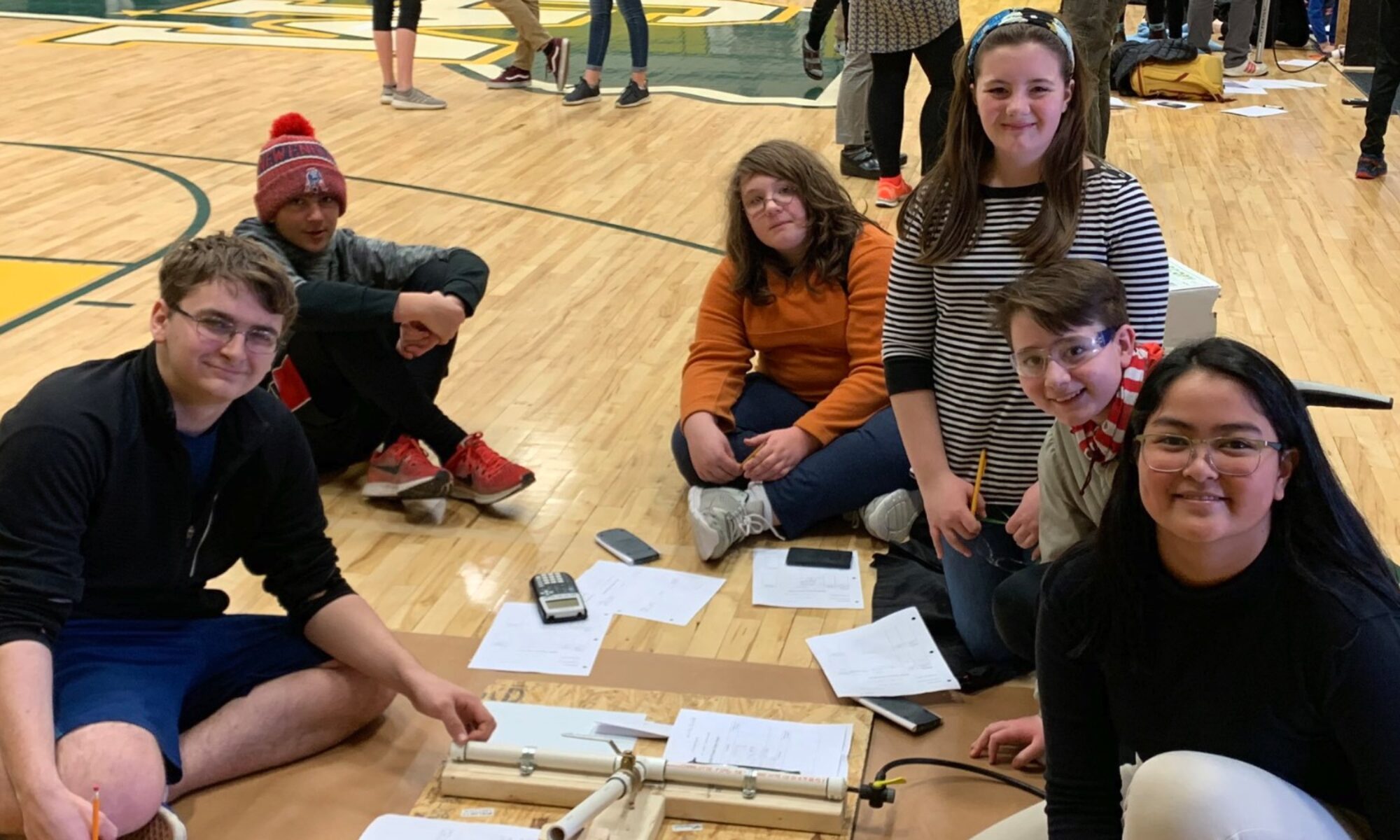3 strategies shared by local educators
 At Manchester Elementary Middle School, sixth grade students speak fluently about their Personal Learning Plans (PLPs). They’ve been working on setting goals in a PLP for years; some students in this school have been doing so since third grade.
At Manchester Elementary Middle School, sixth grade students speak fluently about their Personal Learning Plans (PLPs). They’ve been working on setting goals in a PLP for years; some students in this school have been doing so since third grade.
Manchester educators Seth Bonnett and Melissa Rice, share what they’ve learned about the necessary supports as teachers and students collaborate around goals.
1. Create a PLP Block
 To start, these experienced teachers have clearly learned that young adolescents must have time in their day devoted to constructive PLP work. A weekly block of 45 minutes brings consistency to the entire PLP process. One sixth grader said, “We start our goals early, and we have time to work on it… we don’t have to do it last minute”.
To start, these experienced teachers have clearly learned that young adolescents must have time in their day devoted to constructive PLP work. A weekly block of 45 minutes brings consistency to the entire PLP process. One sixth grader said, “We start our goals early, and we have time to work on it… we don’t have to do it last minute”.
This PLP block is highly structured by the teachers. They set an agenda and to-do list, provide learning targets, and do individual check-in conferences with each student.
Sounds perfect, right?
Rest assured, the teachers at Manchester live in the real world. Some kids need significant support to stay focused and complete proficient reflection, so all special education and advisory staff for the team is available during the block. Five or six teaching staff are on hand for the 45 kids, and the collaborative work of the teaching staff doesn’t happen organically. The teacher roles, goals, and scheduling for the PLP block is carefully negotiated at the beginning of the year.
2. Collaboratively design learning goals in a PLP
After years of working with adolescents on goal-setting, Mrs. Rice and Mr. Bonnett have honed the process. Bonnett says,
“Over time, I think that I have learned the art of directing kids to make appropriate goals. Many times the students either choose a goal that is not appropriate for them or one that is too easy for them to meet.”
Years ago, they would let students set a goal about almost anything. Goals were open and flexible, so that students could tailor them to personal interests and outcomes. What happened, though, was that they found most 11 and 12-year-olds didn’t understand their own learning needs and curriculum goals. Often, students were setting goals that were never met — likely because there wasn’t a chance during the school day.
While there are still opportunities for students’ personal interests, such as in personal goals and community goals, when it comes to setting learning goals, teachers need to be more involved.
Math teacher Melissa Rice learned that she could maximize the process by collaboratively setting goals at the beginning of math units. She works directly with students to set learning targets, mainly based on Common Core standards, and those lead students to goals. Rice uses a pre-assessment and color coding system based on a stoplight to help her students internalize their process towards reaching targets.
Her students explain:
As you heard Daisy and Sydney explain, above:
- Red designates a new concept; students haven’t been exposed to this learning, yet.
- Yellow signifies that the student has some understanding but still needs prompting and teacher direction.
- A green light means the student can solve problems independently.
With this system, the teacher and student go through together and do the color-coding. Rice has learned that the coding system has enriched students’ awareness of learning targets and their own proficiency. By identifying those concepts not introduced, students feel better about themselves and their abilities. The thinking behind Rice’s system encourages a high degree of metacognition — thinking about thinking — from her sixth graders. Students are led to discover what is not yet a proficient area.
3. Be intentional about student reflection
Not only is the process highly scaffolded, but teachers are very intentional about student reflection.
As students set goals around the learning target, they list action steps, causing students to note that their actions impact proficiency, not an arbitrary score. Students insert evidence into their PLPs when they think they’ve met the learning target. The article Inspiring Progress Towards Learning Goals from Donna Wilson and Marcus Conyers reinforces the influence of metacognition on learning goals.
Vermont continues to pave the way to personalized education for our students. It’s essential that we discover opportunities from each other’s successes and setbacks. As teachers implement PLPs for all students in the middle grades, we can learn from the reflections and observations of those veterans in the field.


Providing support for goal-setting in a PLP in Manchester, VT #vted https://t.co/vP25bf1Ycd https://t.co/JTIhb2HwlM
Tarrant Institute professional development coordinator Rachel Mark shares how educators have be.. https://t.co/6LGJIsKpyY #Disrupt
Providing support for goal-setting in a PLP https://t.co/c7hZBadTxw via @innovativeEd
RT @VTEducare: Providing support for goal-setting in a PLP https://t.co/c7hZBadTxw via @innovativeEd
Providing support for goal-setting in a PLP https://t.co/1Va4HUhQEN via @innovativeEd
RT @lifelegeros: Providing support for goal-setting in a PLP https://t.co/1Va4HUhQEN via @innovativeEd